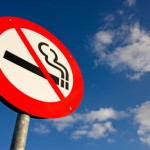I recently mentioned a study that examined results from a large number of medical care sites, some in cities and some in the country. That led me back to an April 3, 2013 JAMA article, "Mortality Rates for Medicare Beneficiaries Admitted to Critical Access and Non-Critical Access Hosptials, 2002-2010. I must confess I didn't read this study the first time I scanned through that edition of the Journal of the American Medical Association (AKA JAMA). In fact, as they say, "my eyes glazed over" when I read the ponderous title.
But then I started to think of my time at Duke, 1966-1970, and its associated Veterans Administration hospital, the Durham VAH. That was clearly an urban setting , but sometimes, when I was on a VA rotation, we'd get a transfer from a different veterans' care facility, one located in the country. Now, in 2013, I fully understand the VA system has been markedly upgraded; then, in the late '60s, there appeared to be a quantum gap between the university-associated VA a few blocks from Duke's main hospital and the one, as we said in our smug way as residents, "out in the boonies."
In retrospect, that was also true of transfers from civilian rural hospitals to Duke University Medical Center itself. It had much less to do with the VA than it did with location.
Today nearly a fifth of our population lives in rural settings and 16 years ago our Congress set up a system to ensure that 20% would have access to hospital care. I've read parts of the legalese, 42 CRF 485, Subpart F, that was the origin of the system, termed the Critical Access Hospital Program. In essence it defined a series of small facilities (no more then 25 beds) located 35 miles or more from the next inpatient facility (shorter distances allowed for mountainous roads). By 2010 nearly 25% of our hospitals fit the CAH definition; with exemptions granted to the various states, only 20% of those CAHs meet the initial distance requirements. The program gives them reimbursement advantages while exempting them from national quality improvement programs.
That last section made no sense to me. If we tried to upgrade healthcare for the estimated 6o million of us that live in rural areas, why wouldn't we insist that those small hospitals join in whatever country-wide care-improvement programs that the urban facilities were mandated to participate in?
I went to the references on that issue; one came out in JAMA in 2006 with the title "Relationship between Medicare's hospital compare performance measures and mortality rates.
The JAMA article looked at large numbers (1.9 to 4.4 million) of patients admitted to the CAH hospitals and to non-CAH hospitals for three common major illnesses: heart attacks, congestive heart failure (the short definition per the Mayo Clinic is your heart can't pump enough blood to keep up with your body's needs) and pneumonia over a ten-year period. They specifically looked at death rates and concluded they were worsening in rural areas and improving in urban ones.
Then I thought about healthcare in rural China. I don't want to live there, but I keep being impressed by some of the things that huge and highly populated country is doing. But I've been aware that of the 1.3 billion inhabitants, half live in rural settings and don't share in the advantages that appear to be happening in urban areas.
So I Googled "rural healthcare in China" and found two articles of interest. One from the Bulletin of the World Health Organization in 1993 and said the barefoot doctor initiative had been faltering, the rural cooperative medical system was falling apart, there was an increase in poor, uninsured elderly and the 1978 policy shift to "Fee for Service" had favored the urban workers.
I found a recent update from February, 2013, in the Wall Street Journal online. I subscribe to the paper copy of the WSJ, but was originally asked to pay $21.99 a month more for digital access. Finally I was given a way to look at the article free, but in order to print it would have had to order 50 copies. So I took notes instead.
China spent $125 billion since that 1993 timeframe and now 95% of its people have healthcare insurance and I bet they don't call it "XiCare." There are still huge disparities between rural and urban medical care and Health Minister Chen Zhu says they are encouraging doctors who've recently retired to take a stint in the rural areas, offering free education to new physicians who are willing to work there and (I wonder about this one) planning to lower exam standards for those to "aim to work in villages."
They clearly see a need to improve their insurance coverage rates for severe medical problems; at present a villager with a catastrophic illness still has to pay 30% of the bill.
So both countries have a way to go, but at least have looked at the issue of disparities in how we take care medically of those who live in the city and those who live in a village or on a farm. We've got ~ a fifth of our citizens (and non-citizens) living out there; China has a worse situation with half of its population in the countryside.
It will be of great interest and equal importance to see who solves the problem and how.
Maybe, just maybe, we can learn from each other.









